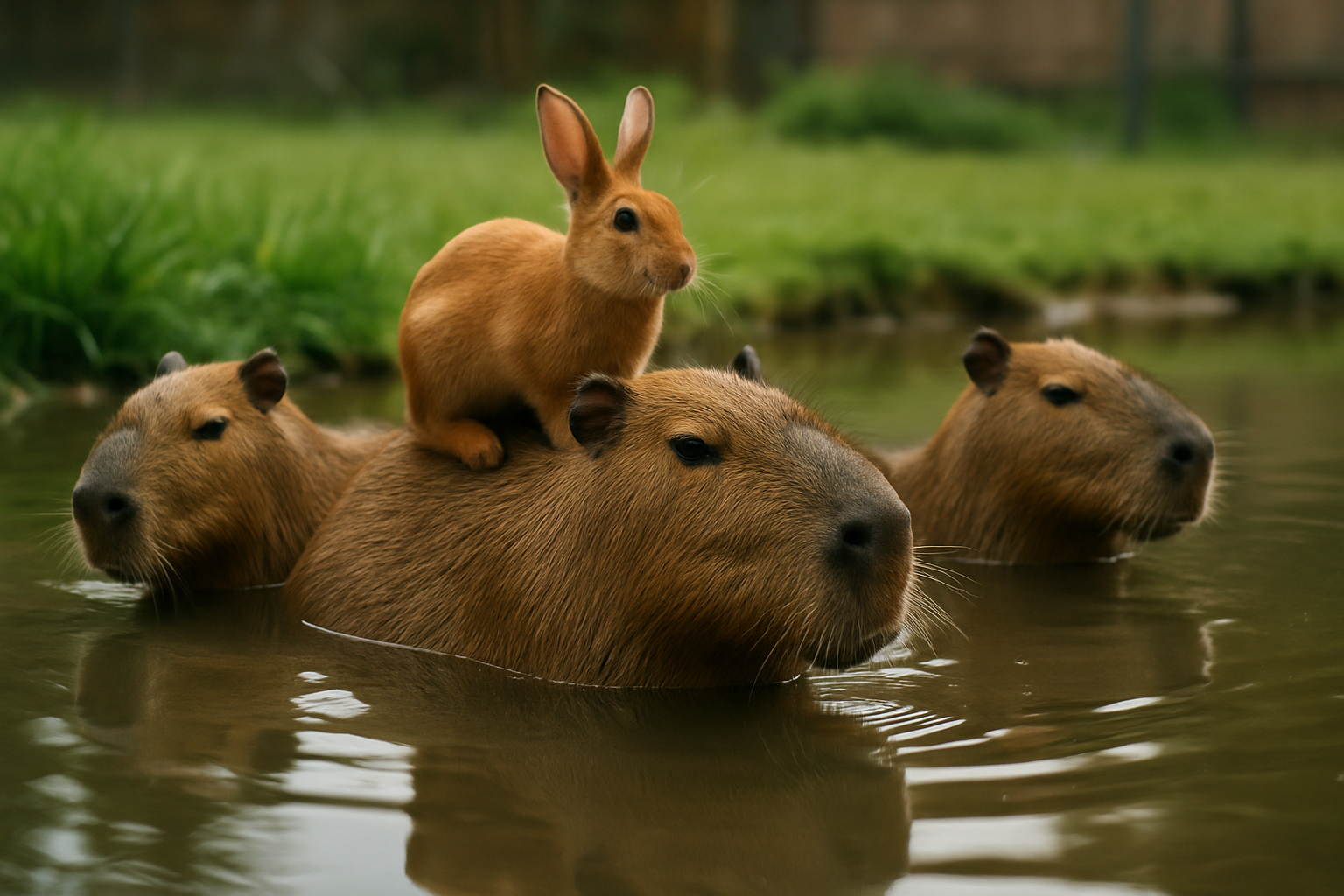The Surprising World of Capybara Companionship
Gentle giants of the rodent world, capybaras are making waves as unconventional pets. These social, semi-aquatic creatures from South America are capturing hearts with their docile nature and unique attributes. As interest in exotic pet ownership evolves, capybaras are emerging as fascinating companions, challenging traditional notions of domesticated animals and sparking conversations about responsible exotic pet care.

The Capybara: Nature’s Gentle Giant
Capybaras, scientifically known as Hydrochoerus hydrochaeris, are the largest rodents in the world. Native to South America, these herbivorous mammals can grow up to 4 feet in length and weigh up to 150 pounds. In the wild, they inhabit areas near bodies of water, such as marshes, swamps, and rivers, across countries like Brazil, Venezuela, and Colombia.
Their social nature is one of their most defining characteristics. In their natural habitat, capybaras live in herds of 10 to 20 individuals, engaging in complex social behaviors and communication. This inherent sociability makes them intriguing as potential companions, as they often form strong bonds with their human caretakers and other animals.
The Rise of Capybaras as Pets
The trend of keeping capybaras as pets has gained traction in recent years, particularly in regions where exotic pet ownership is legal. Their gentle temperament, intelligence, and unique appearance have contributed to their appeal. However, it’s crucial to note that capybara ownership is not widespread and is subject to strict regulations in many areas.
In the United States, for example, laws regarding capybara ownership vary by state. Some states prohibit keeping them as pets entirely, while others require special permits. The estimated cost of acquiring a capybara can range from $1,000 to $3,000, not including the extensive setup and ongoing care expenses.
Creating a Capybara-Friendly Habitat
One of the most challenging aspects of keeping a capybara as a pet is providing an appropriate living environment. These semi-aquatic animals require access to water for swimming and temperature regulation. A large outdoor enclosure with a pool or pond is essential, as is ample space for grazing and exercise.
The enclosure should be secure, as capybaras are excellent climbers and can jump considerable heights. It must also provide shelter from extreme weather conditions and predators. Indoor spaces should be capybara-proofed, with potential hazards removed and sturdy furniture that can withstand their size and strength.
Nutrition and Health Considerations
Capybaras have specific dietary needs that must be met to ensure their health and well-being. In the wild, they primarily consume grasses and aquatic plants. As pets, their diet should consist of high-quality grass hay, fresh vegetables, and specially formulated pellets designed for large herbivores.
Regular veterinary care is crucial, but finding a veterinarian experienced in treating capybaras can be challenging. They require vaccinations, parasite prevention, and dental care. Their semi-aquatic nature also means they need regular access to water to maintain healthy skin and prevent overheating.
Social Needs and Behavioral Considerations
Perhaps the most unique aspect of capybara companionship is their social nature. These animals thrive on interaction and can become depressed if left alone for extended periods. Prospective owners must be prepared to dedicate significant time to socialization and enrichment activities.
Capybaras can be trained to some extent, responding well to positive reinforcement techniques. However, their natural instincts and behaviors must be respected. They may exhibit territorial behavior, especially during breeding seasons, and their vocalizations – which include whistles, barks, and purrs – can be quite loud.
Legal and Ethical Considerations
The legality of keeping capybaras as pets varies widely across different regions. Potential owners must thoroughly research local laws and obtain any necessary permits before considering capybara ownership. It’s also crucial to consider the ethical implications of keeping a wild animal as a pet.
Conservation efforts for capybaras in their native habitats are ongoing, and the pet trade can potentially impact wild populations. Responsible ownership includes ensuring that any capybara obtained comes from a reputable, licensed breeder and not from the wild.
The Future of Capybara Companionship
As interest in exotic pets continues to grow, the conversation around capybara companionship is likely to evolve. While these unique animals can form strong bonds with humans and provide a fascinating pet experience, the challenges of their care cannot be overstated.
Ultimately, the trend of keeping capybaras as pets raises important questions about our relationship with wildlife and the responsibilities that come with exotic pet ownership. As we continue to learn more about these charismatic creatures, it’s crucial that any decisions regarding their care are made with their well-being as the top priority.





